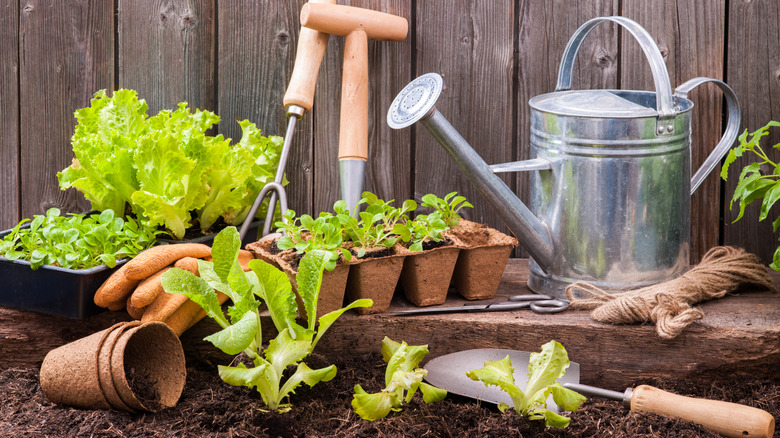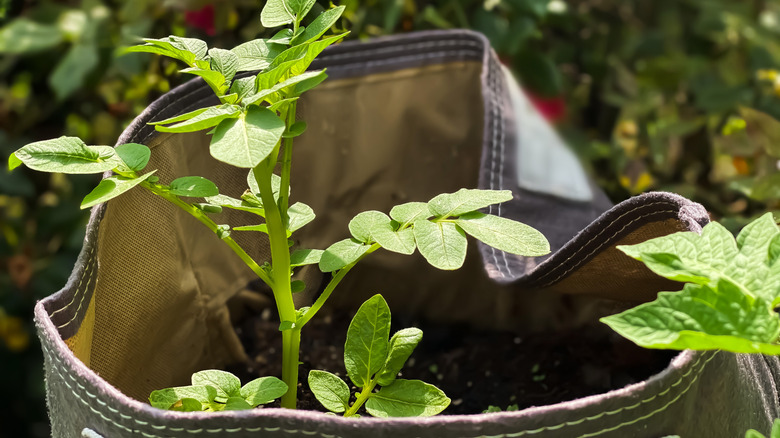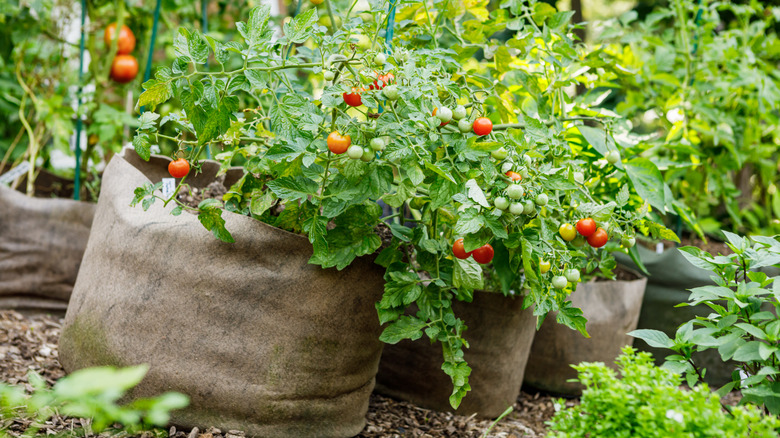The Best Type Of Garden For Beginners, According To Our Master Gardener
We may receive a commission on purchases made from links.
Gardening can be a super intimidating hobby to get into. Between determining what to plant, when, and how to keep everything alive so you don't waste money, you may psyche yourself out before even trying. But if you're a beginner, you don't need to leap right into the deep end. Instead, you can ease your way into gardening by starting out with a beginner-friendly method like grow bags.
A grow bag is a light-weight, fabric planter typically made from polypropylene or other recycled plastics. Although, you can find some made from natural fibers, too. According to House Digest's Garden Editor and in-House Master Gardener, Tiffany Selvey, one of the main benefits of grow bags is that they allow beginners to "dip their toes into growing food and flowers without a large up-front cost."
"Every kind of gardening comes with pros and cons," Selvey exclusively told House Digest. But with grow bags, she noted that "the only initial costs are for the bags, a high-quality soil mix, and seeds or plants." In fact, it's very easy to find sets of grow bags that won't break the bank. For example, you can snag Gardzen 10-pack of 10 Gallon Grow Bags for only $23.99. Once you have them, grow bags can be used for a wide variety of plants including herbs and flowers. You can also consider planting vegetables like tomatoes in your grow bags. When the season is done, you can clean and reuse grow bags in your garden.
Tips to set you and your grow bag up for success
Although grow bags are beginner-friendly, a few simple things will set you up for success. Tiffany Selvey exclusively told House Digest, "[Because] grow bags are made of lightweight material, they can't be moved after they're filled with soil without tearing." To avoid any issues, carefully consider your growing location before filling your bags. Selvey recommends picking a spot that "gets full sun with access to an outdoor water supply like [a] hose or rain barrel."
In addition, Selvey noted that containers like grow bags "tend to dry out more quickly than the ground or large raised beds." Plan to water them at least once or potentially multiple times a day, if it gets super hot. You also need to pick a good soil. You'll need something that drains but doesn't lose all of its moisture. To meet that, look for ones labeled with "potting soil" or "container mix". If you run into issues with your grow bags drying out, some people have also found success adding a small layer of mulch or straw on top.
Why can't you just plant straight into the ground?
Ultimately, grow bags are an extremely affordable way to start gardening. But you may be wondering: Isn't planting straight into the ground free? While technically true, in-ground gardens come with their own drawbacks that may outweigh their low initial costs. As Tiffany Selvey exclusively told House Digest, "[I]t takes a lot to turn a patch of grass into a garden."
"Growing in the ground means you'll need a soil test to amend your soil and add nutrients, as needed," she added. Although you can DIY tests to check on your soil's health, you need a bit of additional knowledge and materials to actually make use of those results. For example, if you conduct a pH test and your soil comes back acidic, then you'll need to neutralize it by adding limestone. In addition to accounting for soil health, Selvey pointed out that in-ground gardens "also means bigger issues with pests, diseases, and weeds." Although grow bags can attract pests like aphids, you run into them less often than in-ground gardens.


